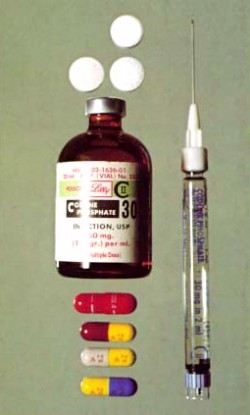3 Reasons to Choose Opiate Addiction Treatment Over a Troubled Relationship
If you’re in an intimate relationship where opiate abuse practices take place on a regular basis, the potential for developing a full-blown addiction runs incredibly high. Opiate abuse in any form breeds increasing chaos within the life of the user. In this respect, mounting chaos is inevitable when opiate abuse practices enter a relationship.
Maintaining a close relationship is hard enough without the damaging effects of opiates on one’s thinking and emotions. Over time, both partners stand to see considerable decline in their overall physical and psychological well-being, which inevitably compromises the health of the relationship.
For information on available opiate addiction treatment options, call our toll-free helpline at 800-291-1732 (Who Answers?)
.
If you’re struggling with an opiate addiction problem that’s taken over your relationship, here are three good reasons to get needed treatment help.
3 Reasons to Choose Opiate Addiction Treatment
1. Never-Ending Emotional Turmoil
Opiates disrupt the brain’s natural chemical environment. Brain neurotransmitter chemicals play an essential role in regulating the body’s functions. For these reasons, ongoing opiate abuse will essentially warp your emotional well-being.
According to the Substance Abuse & Mental Health Services Administration, emotional problems tend to take the form of:

An opiate addiction will cause issues in your relationship.
- Depression
- Anxiety episodes
- Aggression
- Irritability
- Feelings of detachment
With opiate addiction, the desire to get and use the drug takes priority over any desire for harmony in the relationship. Under these conditions, it doesn’t take very long at all before fighting, deception and a growing distance develops between you and your partner.
2. Financial Problems
With a developing opiate addiction, keeping a job and paying bills becomes less and less important as the need for the drug starts to take over your daily life. Opiate effects breed poor decision-making and poor impulse control, which only makes it that much easier to neglect important financial issues.
Money problems can place a strain on the best of relationships, let alone a relationship where opiate addiction is present.
3. Using Opiates to Cope
The damaging effects of opiates on the mind eventually reach a point where a person actually believes he or she can’t cope with daily life without the drug’s effects, according to California State University Northridge. This means, as relationship tensions grow, opiate abuse practices are likely to increase.
Instead of helping you cope, the opiate abuse cycle only makes things worse so relationship problems will continue to get worse over time.
The Need for Opiate Addiction Treatment
In light of the overall decline opiate abuse causes, the likelihood of seeing any improvement in your relationship is slim to null as long as drug use continues. In effect, problems are likely to worsen over time to the point where emotional, and even physical abuse starts to become the norm rather than the exception.
While it can be hard to take time away from a love relationship to get treatment help, not doing so only lessens your chances of making the relationship work. Ultimately, it doesn’t matter which one of you seeks out needed treatment help as long as long as someone takes the first step.
Please don’t hesitate to call our helpline at 800-291-1732 (Who Answers?)
to speak with one of our addiction counselors about getting opiate addiction treatment help.
10 Ways Codeine Addiction Can Ruin Your Life
From Pill-Popping to Opiate Addiction: How Did I Get Here?
It can be hard to believe that a casual pill-popping habit can turn into the ugliness that is opiate addiction, but it happens all the time. Prescription opiate drugs work wonders at relieving pain symptoms. They also work wonders at paving the way for addiction to develop.
Whether opiates entered your life though an unfortunate injury or accident that warranted a pain medication, or you use them to “take the edge off” of daily living, the potential for opiate addiction grows with each passing day once drug abuse enters the picture. If you’re on the brink of a full-blown opiate addiction or know someone who is, understanding how opiates hijack your health and mental well-being can help you take steps towards taking back control of your life.
Call our helpline at 800-291-1732 (Who Answers?)
for information on opiate addiction treatment options.
The All-Time Pill-Popping Myth
The common perception that doctor-prescribed medications have built-in safety features can be misleading, especially in the case of opiate-based drugs. Granted, prescription opiates, such as codeine and Dilauid are formulated to produce controlled effects; however, they also produce certain unintended side effects, such as feelings of calm and contentment, according to Northwestern University.
These unintended side effects coupled with so-called “safety features” can easily place unsuspecting users at risk of opiate addiction.
Opiate Effects Take on a Life of Their Own

Pill-popping recreationally can quickly develop into an addiction.
As a general rule, prescription opiates should only be used on a short-term basis, not to exceed three consecutive months. This condition offers the only real precaution for avoiding the opiate abuse-addiction cycle.
Once a person exceeds this three month limit, the drug’s unintended side effects take on a life of their own. In effect, long-term use of these drugs alters the brain’s chemical makeup in dangerous ways.
Once frequent withdrawal episodes and emotional distress become the daily norm, an opiate addiction is at work.
When Pills Are No Longer Enough
Unbeknownst to most users, the brain readily adapts to the effects of opiates and actually adjusts its own chemical activities to accommodate opiate effects. According to the National Institute on Drug Abuse, these interactions mean the brain’s tolerance for opiates is increasing. When this happens, larger drug doses must be ingested to in order to experience the desired “high” effect.
Tolerance levels will continue to increase for as long as a person keeps taking the drug. After a certain point, a person will have to transition to stronger opiate drugs, such as heroin or heroin-fentanyl combinations. Not only has a full-blown addiction taken hold, but the risk of overdose, and even death has increased considerably.
Treatment Considerations
If you’ve reached the point where getting and using prescription pain pills has become the bright spot in your daily life, there’s a very real need for some type of opiate addiction treatment help. Even in cases where a person can still carry out daily life responsibilities, such as work and maintaining a home, the need for treatment is there.
If you or someone you know are dealing with an opiate abuse problem and have reached a point where you’re considering drug treatment, please don’t hesitate to call our toll-free helpline at 800-291-1732 (Who Answers?)
to speak with one of our addiction counselors.
Can You Get Addicted from Snorting Codeine?
Is Codeine Addictive?
As one of the three natural derivatives of opium, codeine carries many of the same addictive properties as morphine and heroin. Codeine’s intended uses as a prescription pain reliever and cough suppressant can be wrought with unexpected consequences when abused on a regular basis.

Codeine, in its many forms, is an addictive drug.
According to Dickinson College, codeine exists as the first opiate derivative to be marketed as an over-the-counter drug. While over-the-counter codeine products do carry a low addiction potential, long-term use greatly increases the risk of addiction.
When taken and abused in prescription form, codeine’s addictive properties come full circle. Regardless of the type of drug involved, codeine’s effects on the brain mark the starting point for how this drug lures users into addiction’s trap.
Codeine Drug Classes
According to the U. S. Drug Enforcement Administration, the federal government assigns certain classifications for drugs known to have a potential for abuse and addiction. As controlled substances, drug classifications run from Schedule I to Schedule V with Schedule I drugs carrying the highest addiction potential.
Codeine comes in prescription form and may also be sold over-the-counter depending on the amount of codeine ingredients. As codeine can be used to treat a wide range of conditions, codeine runs the gamut, spanning from Schedule II to Schedule V drug classes.
Codeine-laced cough syrups make up the bulk of over-the-counter products sold. Prescription medications typically combine codeine with other non-opiate pain relievers as well as with codeine alone.
Codeine Effects in the Brain
Like other opiates, codeine works to relieve pain symptoms by interrupting nerve signal transmissions throughout the brain and central nervous system. The brain also has its own group of endorphin or pain relief chemicals that closely resemble codeine (and other opiates) in chemical structure.
The similarity between codeine and the brain’s natural chemicals accounts for why the brain so readily accommodates codeine’s presence. In effect, the brain can’t tell the difference between codeine and its naturally-occurring chemicals. These conditions make it that much easier for codeine dependence, abuse and addiction to develop.
Abuse Potential
In addition to its pain-relieving properties, codeine can also produce pleasant sensations of euphoria and calm. These effects further enhance the drug’s abuse potential. Codeine also produces a short-acting effect that drives recreational drug users to keep ingesting the drug.
After a while, codeine’s effects on brain chemical processes start to diminish in strength as brain cells become less sensitive to the drug. As a result, users must keep increasing their dosage amounts in order to experience the drug’s “high” effect.
Addition Potential
According to Columbia Health, impaired brain functions, increased tolerance levels and encroaching withdrawal effects all work together to drive a codeine addiction. In effect, a person keeps taking codeine to ward off uncomfortable withdrawal effects, while brain functions deteriorate and tolerance levels continue to rise.
When taken as prescribed, codeine’s addiction potential remains fairly low. When abused, the brain’s physical dependency eventually drives a person to “need” codeine to cope with everyday stressors and pressures. At this point, codeine addiction has come full circle and taken over a person’s priorities and motivations.



